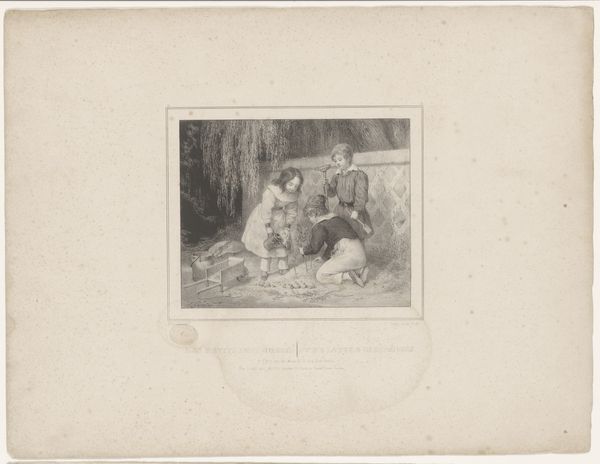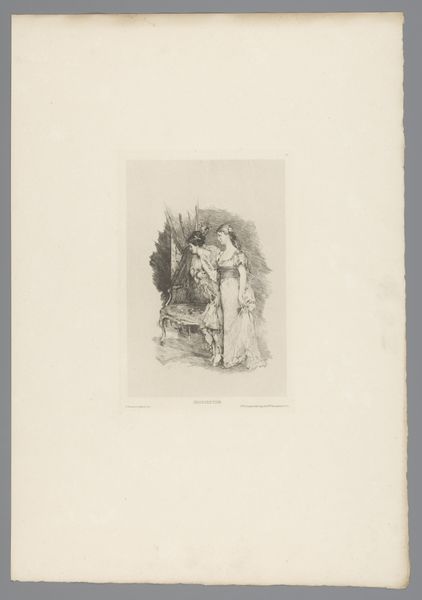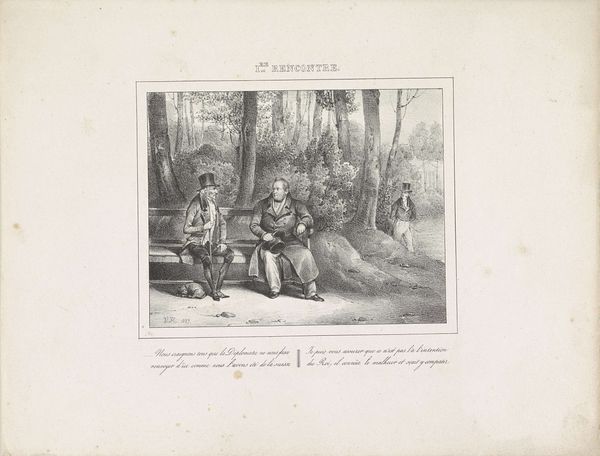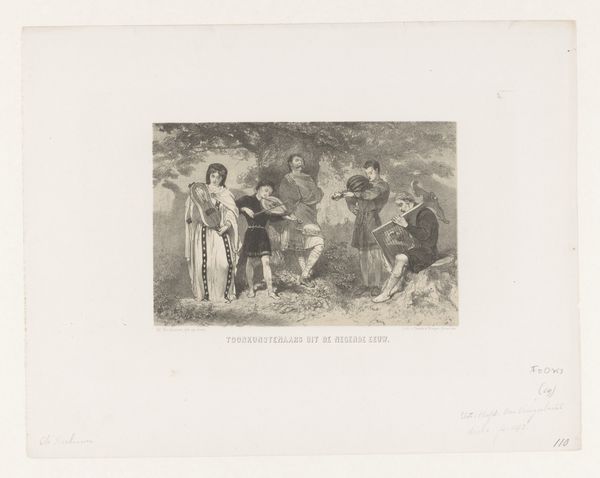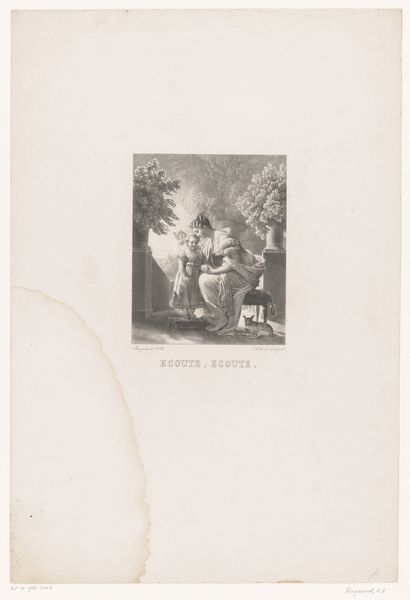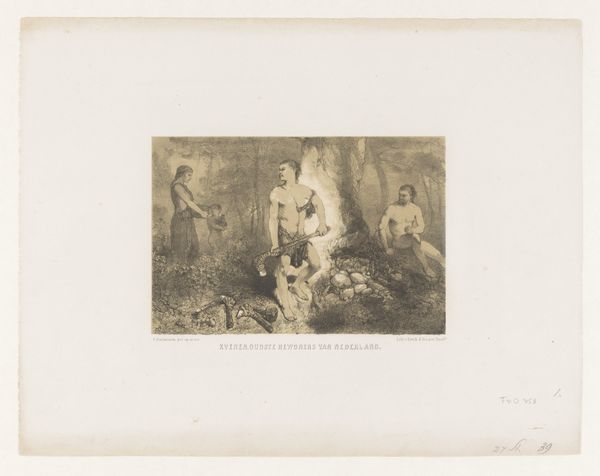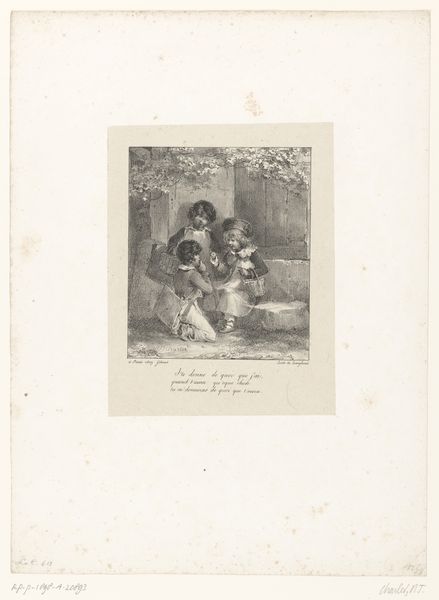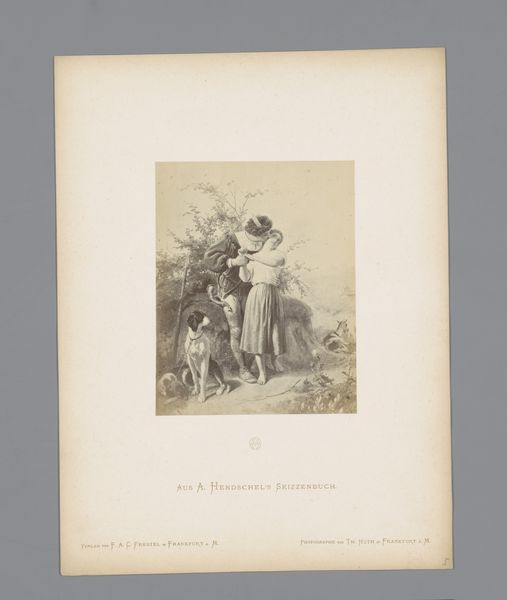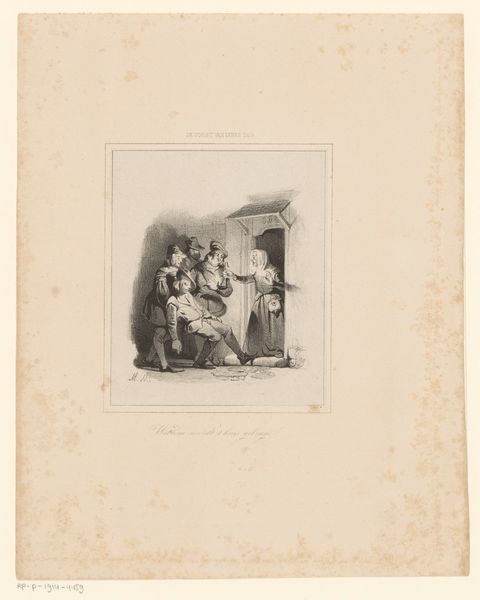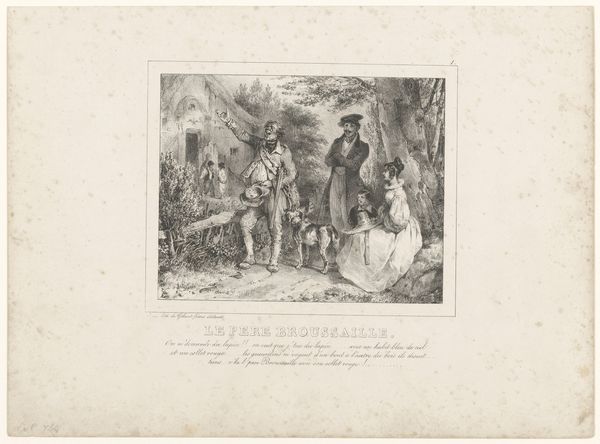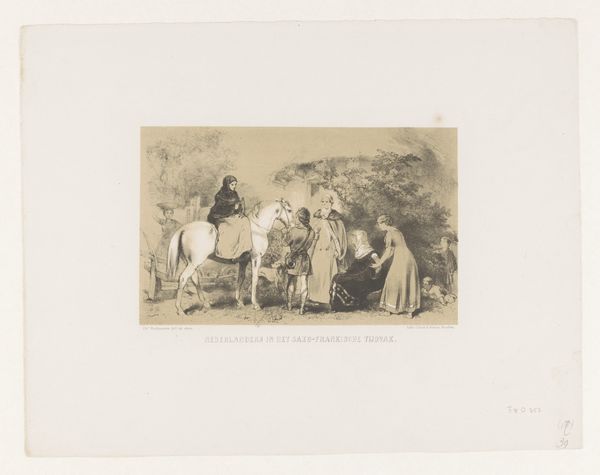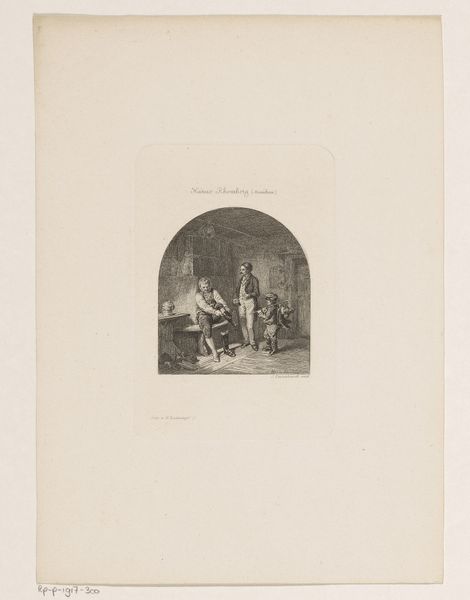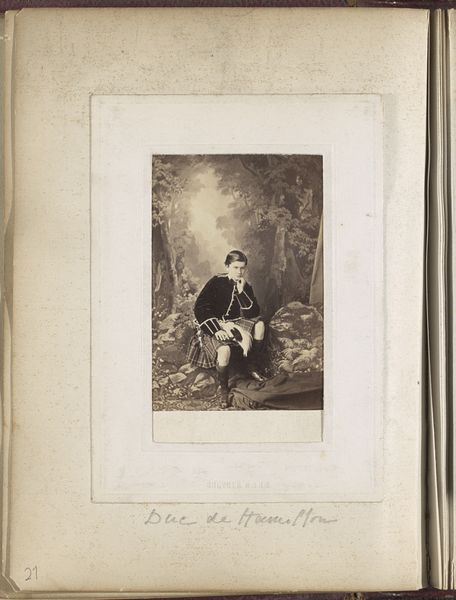
photography, gelatin-silver-print
#
portrait
#
landscape
#
photography
#
gelatin-silver-print
#
hudson-river-school
#
history-painting
#
realism
Dimensions: height 99 mm, width 128 mm, height 228 mm, width 334 mm
Copyright: Rijks Museum: Open Domain
Curator: This gelatin silver print by William Notman, dating from 1866, is titled "Jagers om een geschoten eland," or "Hunters around a shot elk." What are your initial thoughts? Editor: A striking stillness pervades the image, even with the elk laid out on the ground. The sepia tones create an air of almost theatrical formality around this kill; what story does it tell about this period and those pictured? Curator: I'm fascinated by the way Notman uses the tradition of history painting in photography here. Note the careful posing and arrangement, akin to classical hunting scenes elevated to grand narratives. But whose story is really being told and who benefits here from the glorification of the 'hunt'? Editor: It seems deliberate, this echoing of painterly conventions within a relatively new medium. And perhaps the history being written is one of masculine prowess and dominion over nature, reinforced by class and racial dynamics—the relationship between guides and officers implied on the page. Is it intended to shape societal perspectives about land management? Curator: Exactly. It visualizes a complex set of power relations. Notman was commercially astute, producing these images for a burgeoning tourist market eager to consume a romanticized version of the Canadian wilderness. The staged nature points to the constructed identity around this wilderness adventure as well as those participating in these outings, especially with the onset of increased resource extraction. Editor: Knowing this was made for the tourist trade adds a crucial layer. The staged "naturalness" underscores how colonial expansion was actively marketed and consumed. The focus is removed from ecological perspectives and shifted to personal accomplishment. It all emphasizes an evolving sense of what wilderness represented during Canadian expansion. Curator: Indeed, these meticulously composed scenes were integral to how the Canadian landscape became perceived both domestically and abroad, solidifying its appeal to wealthy sportsmen but to what consequence for indigenous ways of living and more respectful approaches? Editor: It’s sobering to think how images like this were actively involved in scripting and solidifying problematic narratives. The very act of staging such photographs speaks volumes, even across a century.
Comments
No comments
Be the first to comment and join the conversation on the ultimate creative platform.
